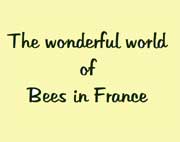European Beaver in France
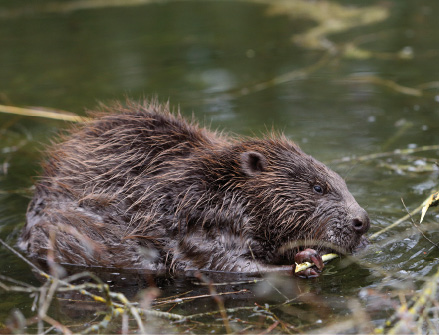


During the period between the 17th century and the end of the 19th century the European Beaver had disappeared from many regions in France, the Loire, the Seine and the Rhine as a result of human destruction, principally by the killing for meat, fur and castoreum which is a secretion from their scent glands, one use of which is in the perfume industry. In addition the construction of barrages and certain riverside constructions act as a restraint to their movements.
At the beginning of the 20th century
the population in the Rhône was estimated at no more than a few dozen localised in the lower reaches. In an effort to avoid extinction it was protected in Bouches du Rhône, la Gard and le Vaucluse in 1909 and a slow re colonisation took place until in 1960 it presence had reached as far as the south of Lyon. Since the mid 1960s until the mid 1980s more than 250 have been released in 15 different departments in the Centre, the North-east and in Brittany, all have been taken from the Rhône population. Since that time the populations have slowly grown with an expansion in range in some regions; in Brittany the population is limited to la haute vallée de l'Ellez where it was re introduced, being effectively trapped there by an artificial dam and an area more than a kilometer long of natural fallen granite.
The only river in Poitou Charentes
where a reintroduction was attempted was the Creuse in
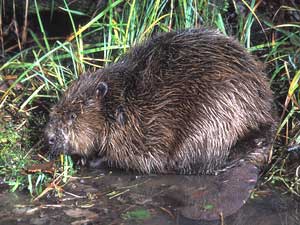
The European Beaver is not the same species as the North
American Beaver. It is the largest rodent in
They live in small family groups with an adult pair, kits, yearlings and sometimes some slightly older offspring. At any one time, there is thought to be a floating population of unattached adults, which represents about 40% of the total population, which live on their own. The active area for a family group is normally 1 to 3 kilometers, although much larger distances have been observed and various indicators are used to provide evidence of their presence. On land, up to 100 metres from the water, tree felling areas can be found with the corridors that lead to them; also odd branches are often gnawed in a distinctive manner. Burrows in the bank sides used for resting, eating and storing food are not always easy to see unless branches have been used in their construction. Deposits of castoreum are used to mark territory; this is secreted from the anal glands under the tail and normally placed on mounds of soil within 1 metre of the waters edge, however excreta is deposited in the water and therefore can not be used as indication of presence. They are exclusively vegetarian consuming 2kg of vegetation or 700g of bark a day; in fact they have an eclectic diet which takes in most forms of vegetation, bark, leaves and tuberous roots. Damming and pond making using branches takes place but constructions are much smaller than those made by its North American cousin.
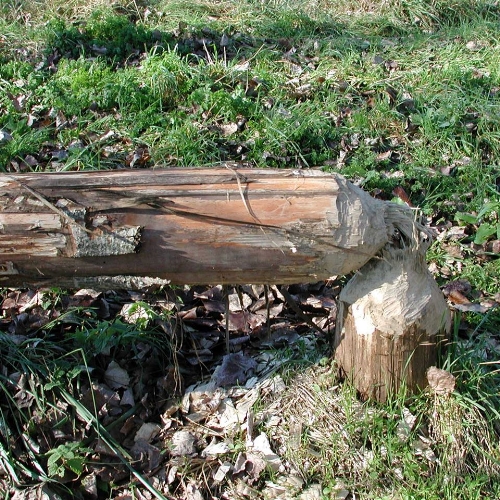
Tree felled by beaver in Vienne, France, (source-Vienne nature)
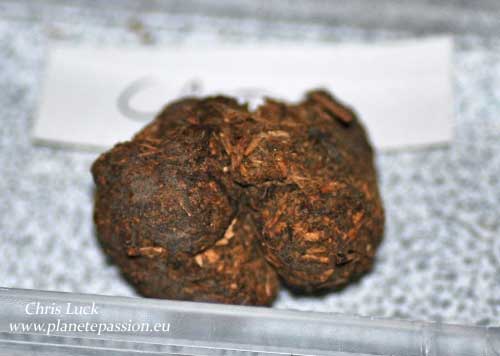
Photo above: Beaver excrement is fibrous and comprised of multiple small pieces.
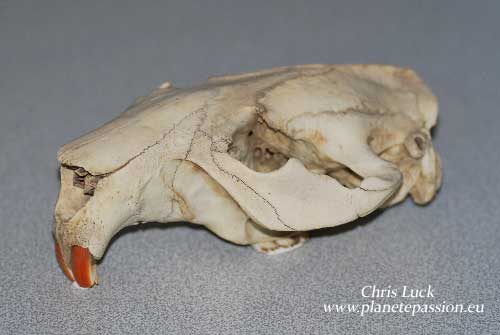
Photo above of a European Beaver skull, (missing lower jaw). They have many similarities to a Coypu but are distinctly larger for adults.
They have fairly specific habitat requirements, a permanent water source with a depth of not less than 60cm with a normally slow current and an incline of 1% or less, an absence of large barriers (e.g. hydro-electric stations) and a significant amount of wooded bank side, willows, alders and poplars by preference.
Sexual maturity is reached at 2 years for females, 3 years for males; coupling takes place in the water between January and March and the young are born around 110 days later in a nest with their eyes open and covered with fine downy hairs. They are suckled by their mother for between 6 to 8 weeks until they can feed own their own.
The present population, although weak, is not considered threatened but to be closely monitored.
Habitat directive, Annexes 2 & 4. Berne convention Annex 3. National protection, Art.1 mod.




